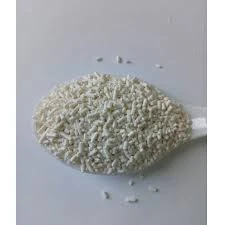
acetic acid formic acid
The Relationship Between Acetic Acid and Formic Acid A Comparative Study
Acetic acid and formic acid are two of the simplest carboxylic acids, both playing significant roles in various chemical processes and applications. While they share some similarities, their structures, properties, and uses distinguish them from one another. This article provides an in-depth look at these two acids, examining their chemical characteristics, practical applications, and environmental impact.
Chemical Structures and Properties
Acetic acid (CH₃COOH) is the main component of vinegar and is widely recognized for its sour taste and pungent odor. It consists of a methyl group (CH₃) attached to a carboxyl group (COOH), making it a two-carbon molecule. Formic acid (HCOOH), on the other hand, is the simplest carboxylic acid with just one carbon atom. Its basic structural formula consists of a hydrogen atom bonded to a carboxyl group. This difference in carbon count leads to various differences in their physical and chemical properties.
In terms of boiling points, acetic acid has a boiling point of approximately 118 °C, while formic acid has a boiling point of about 100 °C. Both acids are highly soluble in water, but acetic acid has a slightly higher pH level compared to formic acid. Acetic acid is classified as a weak acid, meaning it partially dissociates in solution, whereas formic acid, despite being weak as well, exhibits relatively stronger acidic behavior due to its structural attributes.
Another important property is the reactivity of these acids. Formic acid is known for its ability to act as a reducing agent and is more reactive than acetic acid, making it valuable in various synthetic reactions, including the production of esters and other derivatives. Acetic acid is also widely used, particularly in chemical synthesis, as a solvent, and in food preservation.
Industrial Applications and Uses
acetic acid formic acid

Both acetic acid and formic acid have diverse industrial applications. Acetic acid is primarily used in the production of a variety of chemicals, including acetic anhydride, acetate esters, and vinyl acetate, which are further utilized in the manufacture of plastics, synthetic fibers, and coatings. With its role in the food industry, acetic acid acts as a preservative and is a vital component of many food products, particularly in pickling processes.
Formic acid is predominantly used in the leather industry for tanning hides and in agriculture as a preservative and an antibacterial agent for animal feed. Its role as a reducing agent makes it valuable in various chemical reactions, and it is also used in the production of dyes and textile agents. Moreover, formic acid has gained attention in recent years for its potential in renewable energy applications, particularly in fuel cells.
Environmental Impact and Safety
Both acids can pose environmental challenges but in different respects. Acetic acid, while generally regarded as safe at low concentrations, can be harmful to aquatic life if released in large amounts into water bodies. Furthermore, its production and agricultural applications can lead to soil acidity issues if not managed properly.
Formic acid, being a more reactive compound, requires careful handling due to its corrosive nature. It can cause skin burns and respiratory irritation upon exposure, necessitating the use of protective equipment during its handling and application. Nevertheless, both acids are biodegradable and can be broken down by natural processes, making them less harmful in the long term compared to many synthetic chemicals.
Conclusion
In conclusion, acetic acid and formic acid, though closely related as simple carboxylic acids, exhibit distinct properties and applications. While acetic acid is predominantly used in the food and chemical industries, formic acid finds its niche in leather production and agriculture. Understanding the differences and similarities between these two acids is crucial for their effective application and management in various sectors. As the demand for eco-friendly and sustainable solutions increases, the role of these acids may continue to evolve, offering both challenges and opportunities in future applications.
-
Buy High-Quality Trichloroisocyanuric Acid for Sale | TCCA 90% SupplierNewsAug.30,2025
-
Pure Sodium Dichloroisocyanurate Dihydrate | Powerful DisinfectantNewsAug.29,2025
-
Industrial Chemicals: Quality & Purity for Every IndustryNewsAug.28,2025
-
Nitrile Rubber Honoring Strict Production StandardsNewsAug.22,2025
-
Aspartame Ingredients Honoring Food Safety ValuesNewsAug.22,2025
-
Fertilizer for Balanced Plant NutritionNewsAug.22,2025
-
Cyanide Gold Processing with High Purity AdditivesNewsAug.22,2025
Hebei Tenger Chemical Technology Co., Ltd. focuses on the chemical industry and is committed to the export service of chemical raw materials.
-

view more DiethanolisopropanolamineIn the ever-growing field of chemical solutions, diethanolisopropanolamine (DEIPA) stands out as a versatile and important compound. Due to its unique chemical structure and properties, DEIPA is of interest to various industries including construction, personal care, and agriculture. -

view more TriisopropanolamineTriisopropanolamine (TIPA) alkanol amine substance, is a kind of alcohol amine compound with amino and alcohol hydroxyl, and because of its molecules contains both amino and hydroxyl. -

view more Tetramethyl Thiuram DisulfideTetramethyl thiuram disulfide, also known as TMTD, is a white to light-yellow powder with a distinct sulfur-like odor. It is soluble in organic solvents such as benzene, acetone, and ethyl acetate, making it highly versatile for use in different formulations. TMTD is known for its excellent vulcanization acceleration properties, which makes it a key ingredient in the production of rubber products. Additionally, it acts as an effective fungicide and bactericide, making it valuable in agricultural applications. Its high purity and stability ensure consistent performance, making it a preferred choice for manufacturers across various industries.





